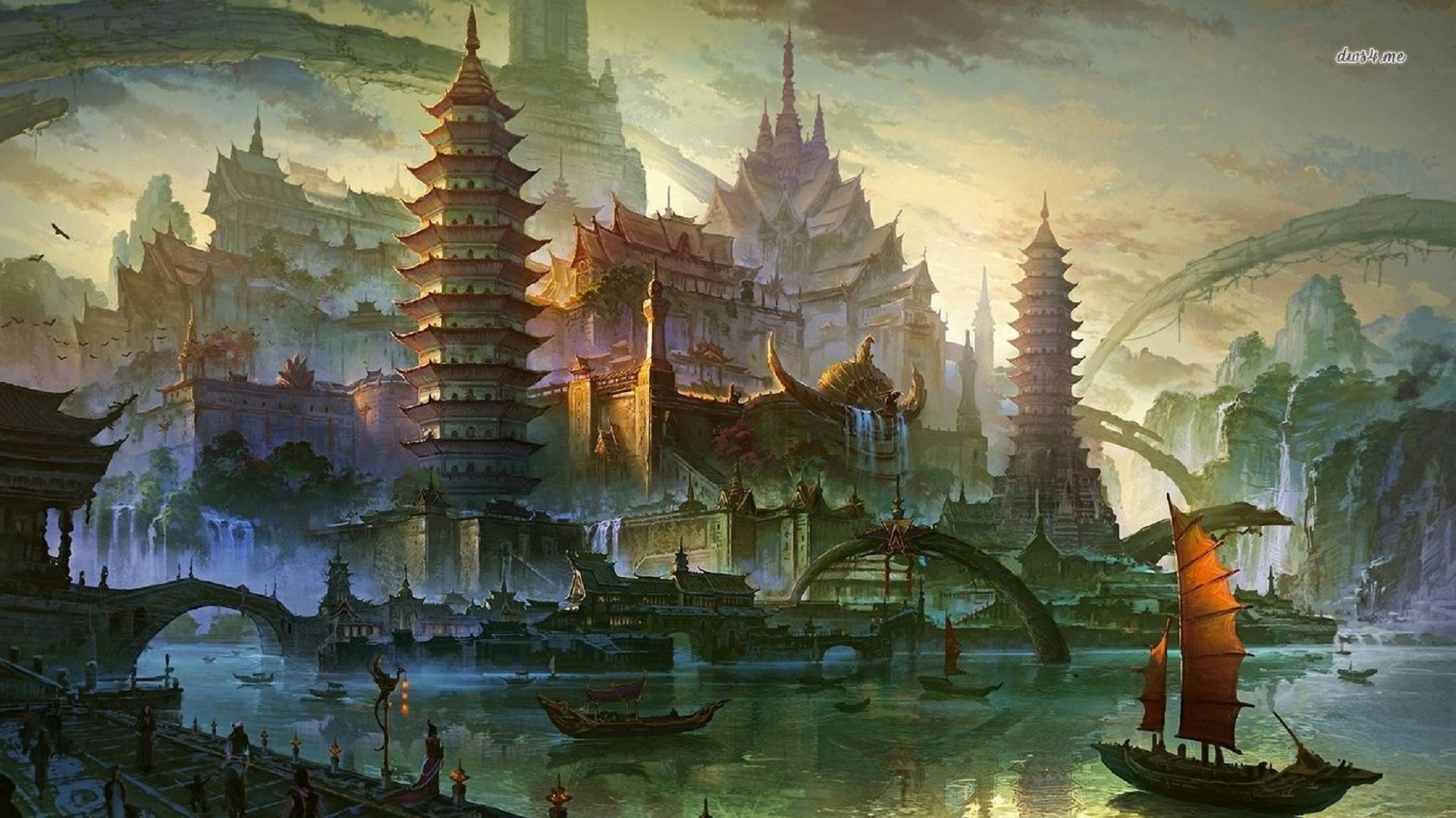Jianghu
Jianghu is the largest country in the Yaojing region. Jicheng, the capital of the republic, is also the cultural, economic, and communications center of the country. Shencheng is the main industrial city; Tianwei is the leading commercial center and port.
Culture
Daily Food
Rice is the dietary staple in most of the country. In the north and the west, where the climate is too dry to grow rice, wheat is the staple grain. Here, breakfast usually consists of noodles or wheat bread. In the south, many people start the day with rice porridge, or congee, served with shrimp, vegetables, and pickles. Lunch is similar to breakfast. The evening meal is the day's largest. Every meal includes soup, which is served as the last course.
People cook in a wok, a metal pan with a curved bottom; this style of cooking requires little oil and a short cooking time. Steaming in bamboo baskets lined with cabbage leaves is another cooking method. Meat is expensive and is served sparingly.
Demography and Population
Agriculture & Industry
Basic Economy
Since the Globalization Initiative, the country began the slow process of shifting from a command-style economy to a more free market system, which managed to quadruple the gross domestic product (GDP) and become the second largest economy in the world. Jianghú has a modern market economy with a large service sector, which comprises two-thirds of GDP. The main goods produced for domestic sale are rice, wheat, soybeans, fruits, and vegetables. Before, all farms were run as communes and were required to sell all of their output to the government at predetermined prices. Today, farmers still must sell a portion of the yield to the government, but the rest goes on the open market where supply and demand determine the price. There is a large black market in foreign goods such as cigarettes, alcohol, and electronic products where connections are of supreme importance in acquiring them. The labor force has 50 percent work in agriculture, 24 percent in industry, and 26 percent in services. The unemployment rate is roughly 10 percent in the cities and higher in the countryside. A large number of migrants move between the villages and the cities, barely supporting themselves with part-time jobs and day labor. One of the largest economic challenges has been feeding the enormous population. The government has taken a two-pronged approach, instituting a series of modernization projects to improve irrigation and transportation and trying to curb population growth by allowing each family to have only two children.Land Tenure and Property
The country's indigenous people hunted and gathered for food and cultivated slash-and-burn plots. Neither practice encouraged permanent forms of property. Jianghese immigrant farmers regarded fallow plots as unproductive wasteland and worked out arrangements for their use with aboriginal leaders, to whom they paid a nominal fee. Land tenure evolved into a three-tier system of patent holder, landowner, and tenant. The patent holder held the subsurface rights, or "bones," of the field in "perpetuity"; the landowner owned the surface rights, or "skin," of the field; and the tenant worked the field. One of the first programs instituted by the nation was land reform that made the landowner the sole owner. Then they reduced taxes and returned land to the tiller. Today, full rights to private property are protected by the constitution.Major Industries
The major agricultural products are pork, rice, betel nuts, sugarcane, poultry, shrimp, and eel. The larger industries include iron and steel, coal, machine building, armaments, textiles and apparel, petroleum, footwear, toys, food processing, automobiles, and consumer electronics. Metallurgy and machine building have received top priority in recent years and account for about one-third of industrial output. In these, as in other industries, the country has consistently valued quantity in production over quality, and this is reflected in many of the products.Education
Children enter kindergarten at age six. After junior high school (grade nine), students take a competitive examination to determine the school they will attend. There are three routes: an academic high school, a secondary vocational school, or a vocational junior college.
Infrastructure
Architecture varies with the diverse climate. In the north, people sleep on a platform called a kang. In the south, straw houses built on stilts are common. In much of the country, traditional houses are rectangular and have courtyards enclosed by high walls. The roofs are sloped, curving upward at the edges.
Each has his own task, and nobody is dispensible.
Here is a playlist that helps me gets into the mood to making content for this article:




How did you add the soundtrack? I can see that the track on this page is a YouTube video, but didn't you just add a sound track earlier?
I attempted to add the soundtrack using the Spotify insert but it kept coming up as 'bad request' so YouTube vid instead.
I've been trying to add some music to my articles using a Google Drive Music Player but there does seem to be anyway of embedding the HTML into the article.